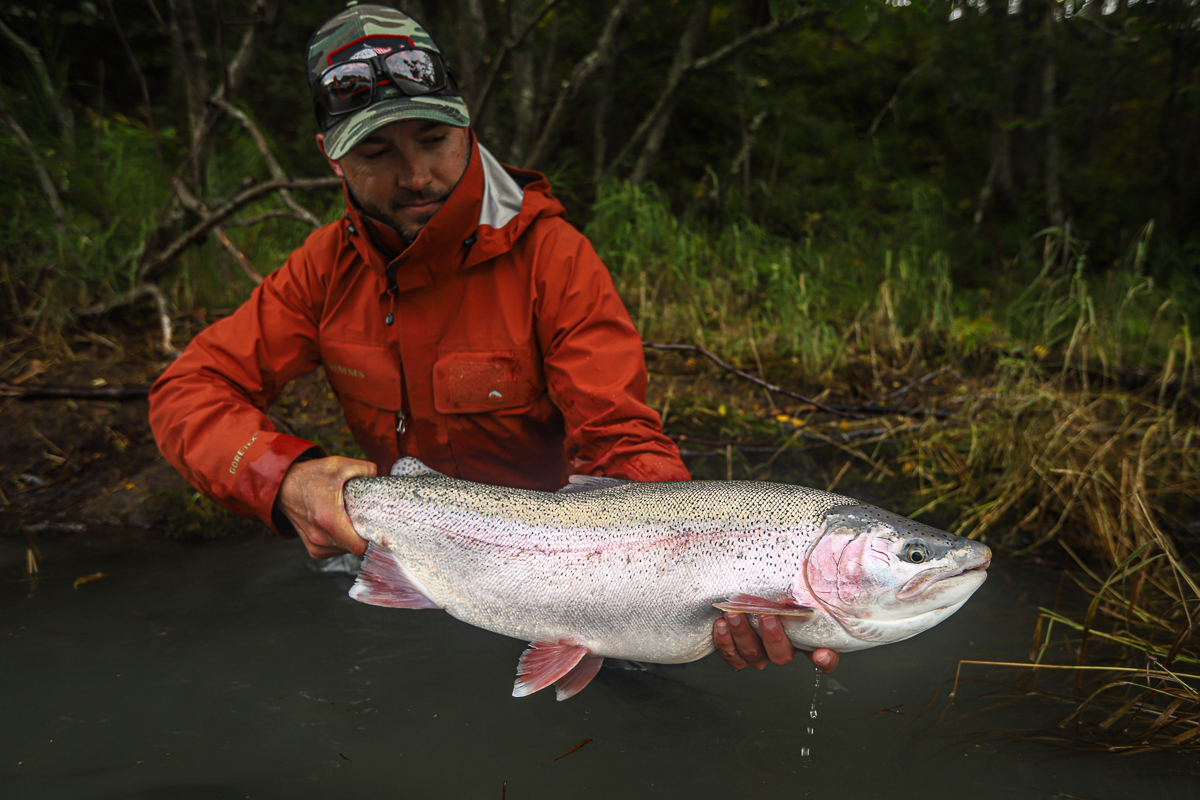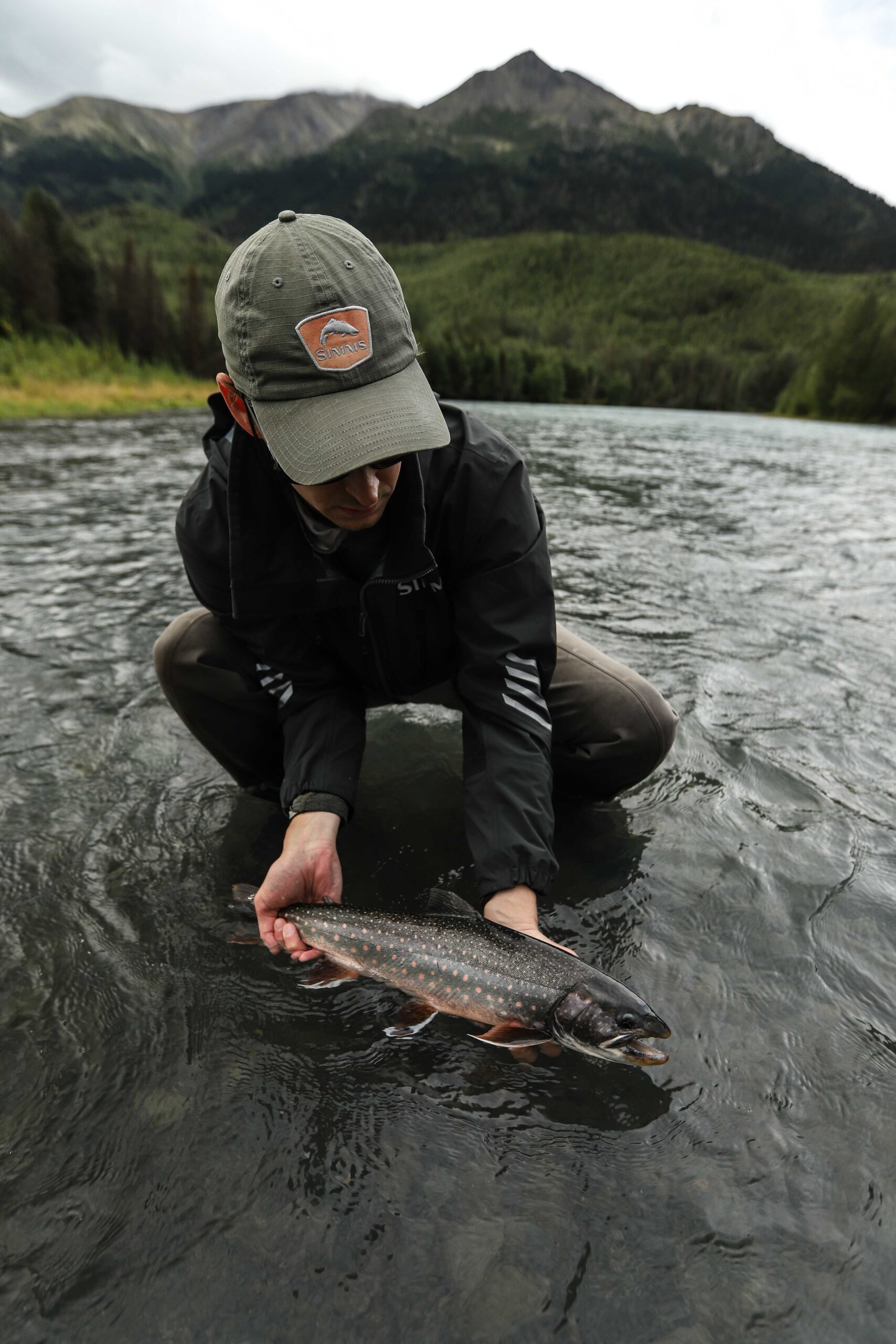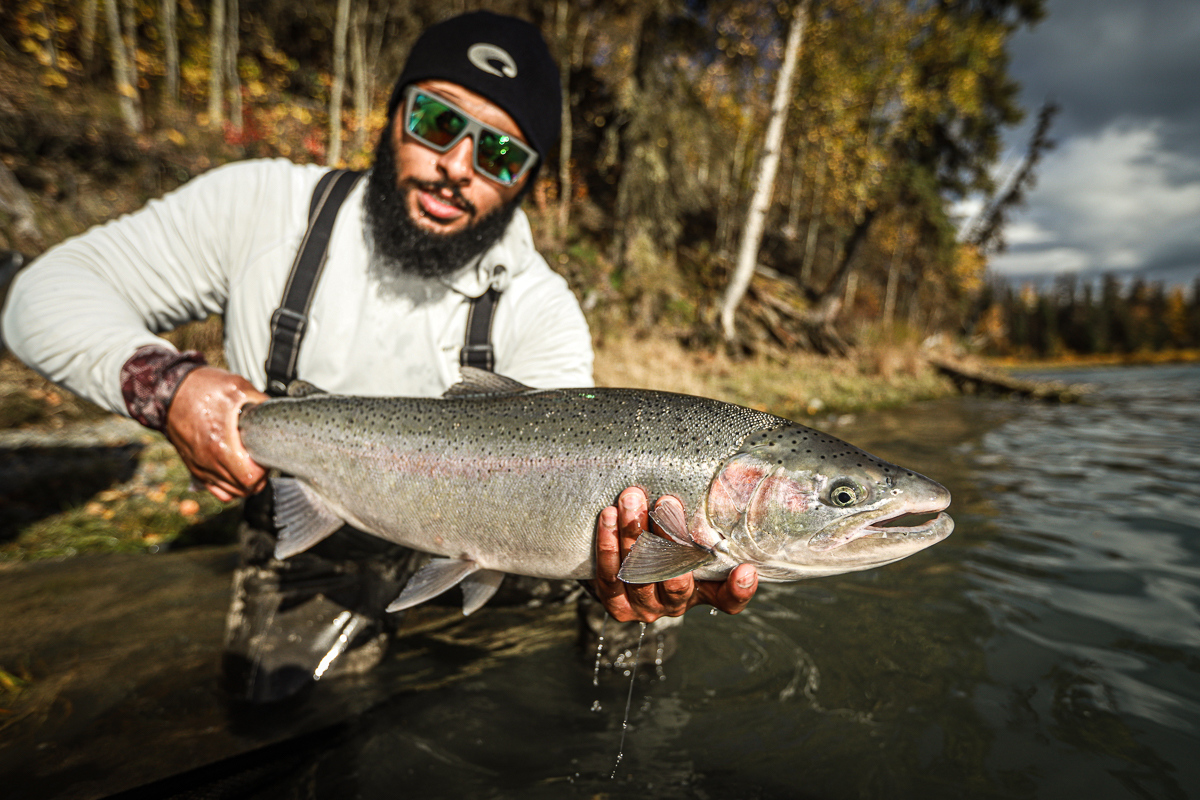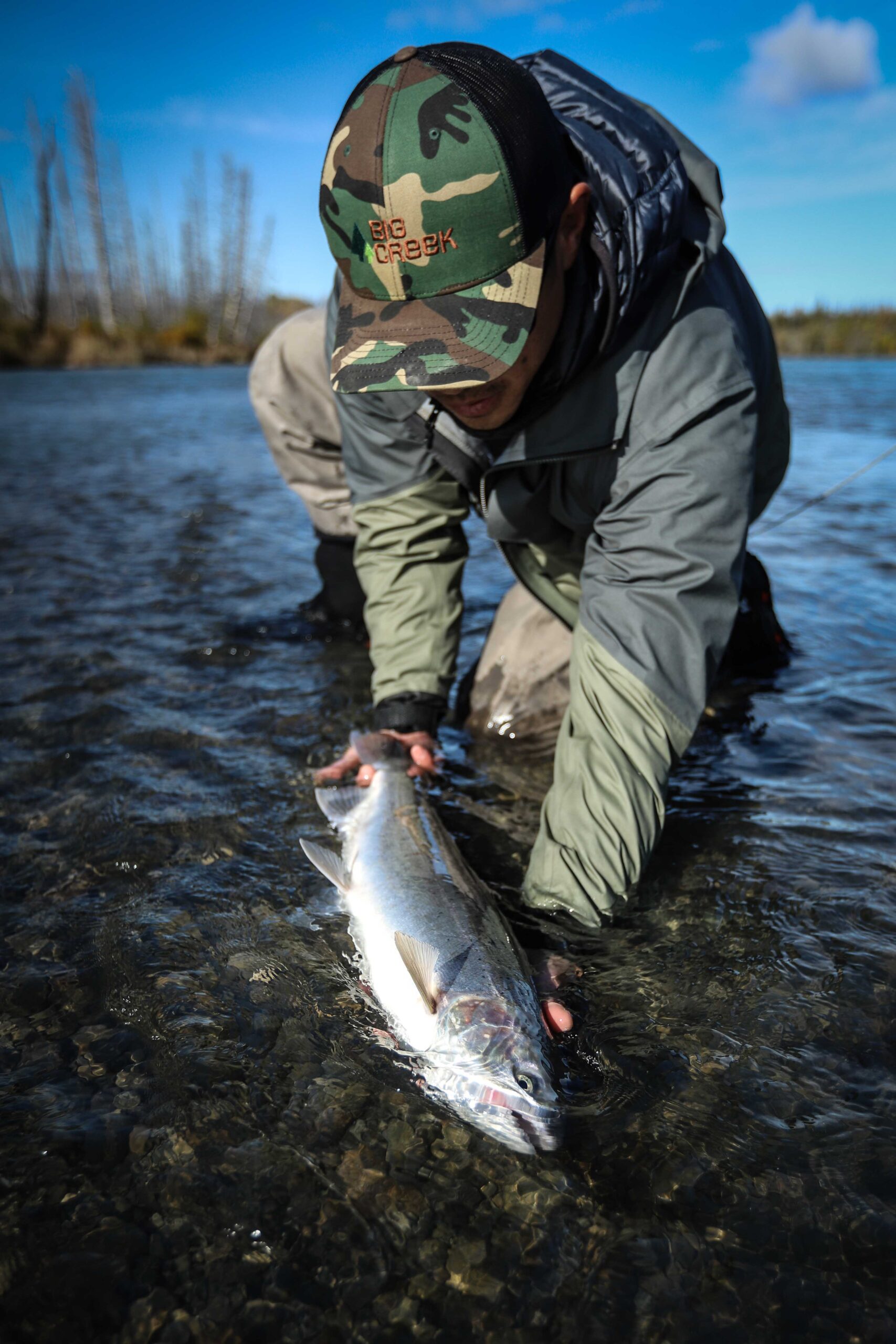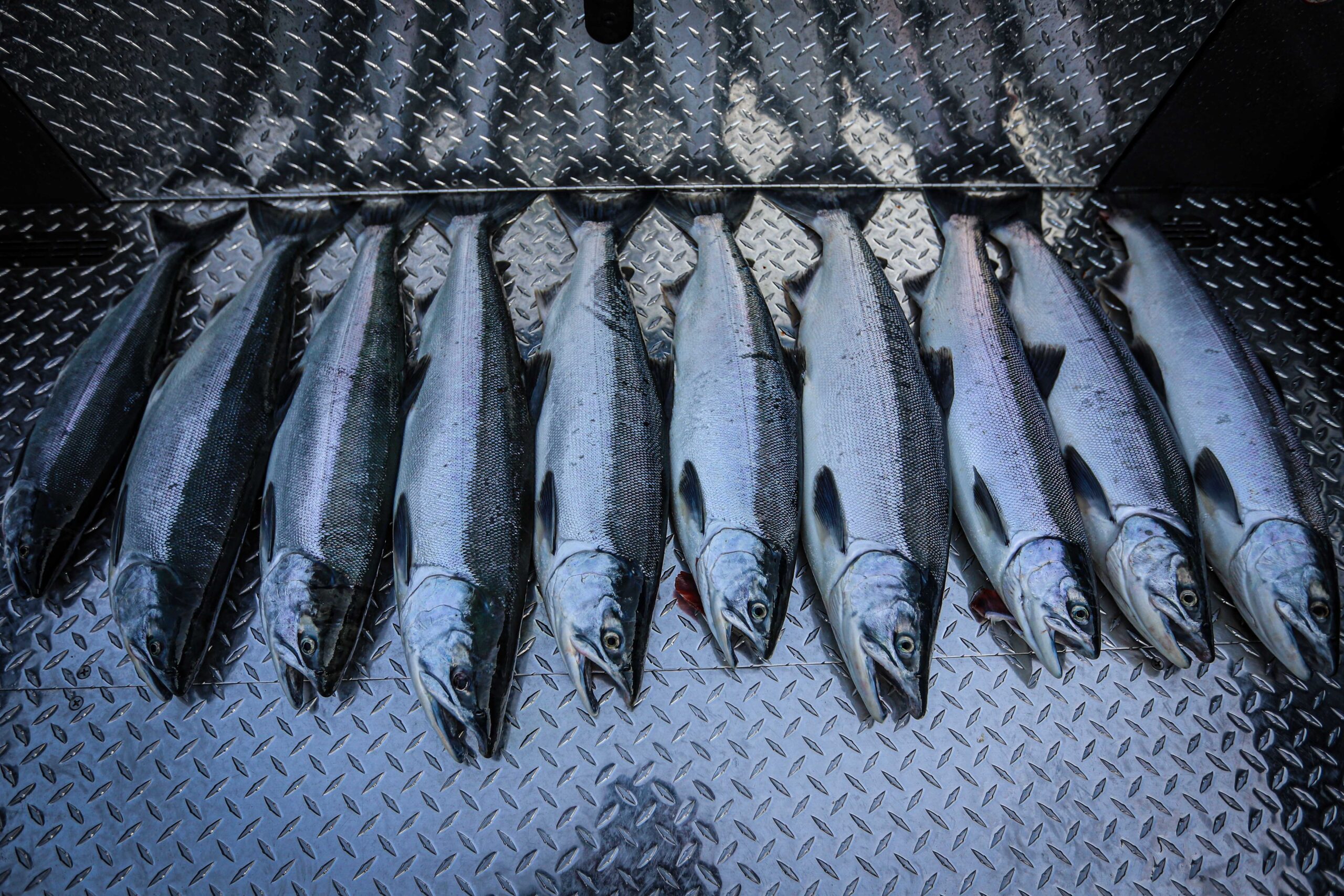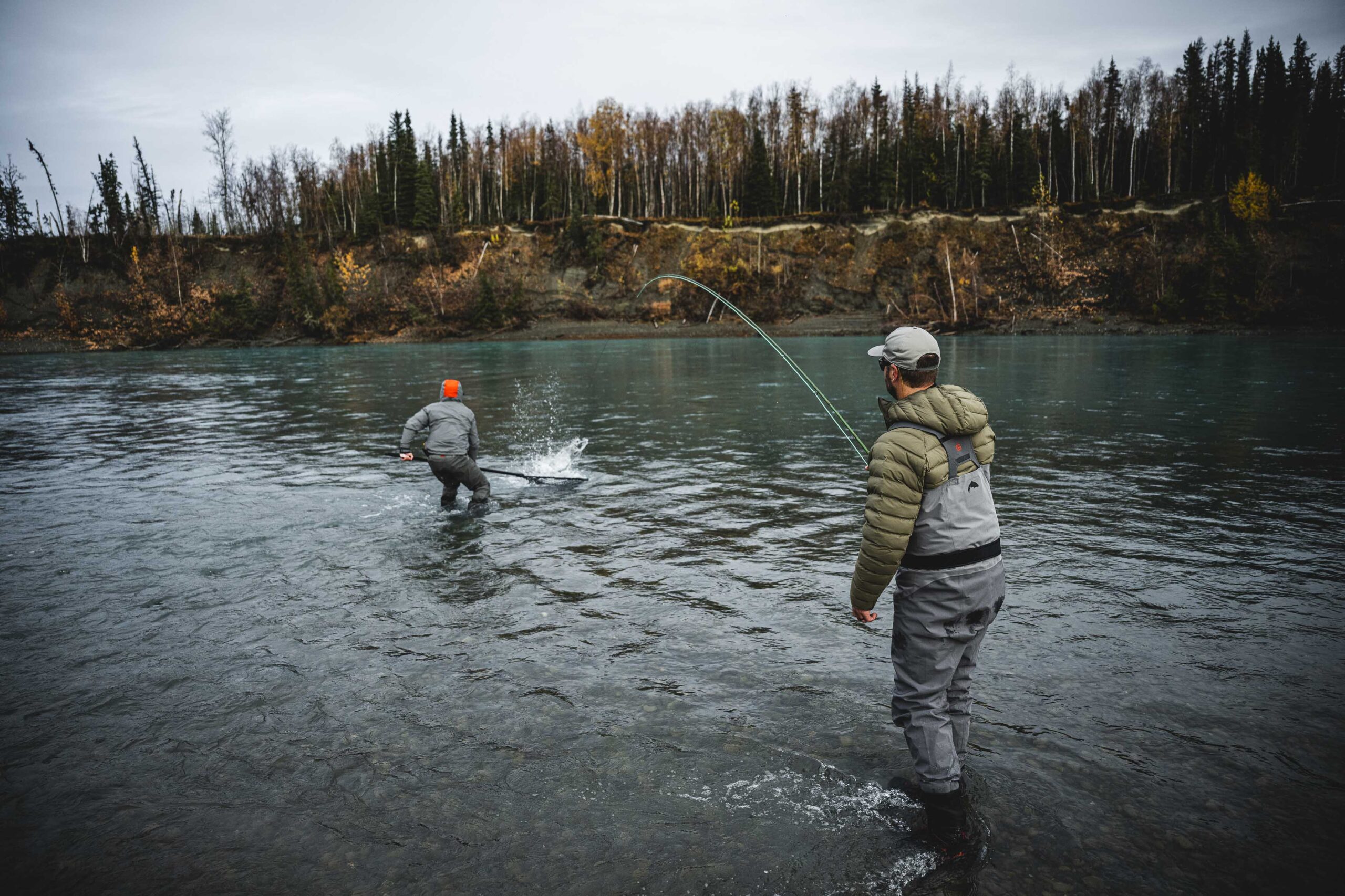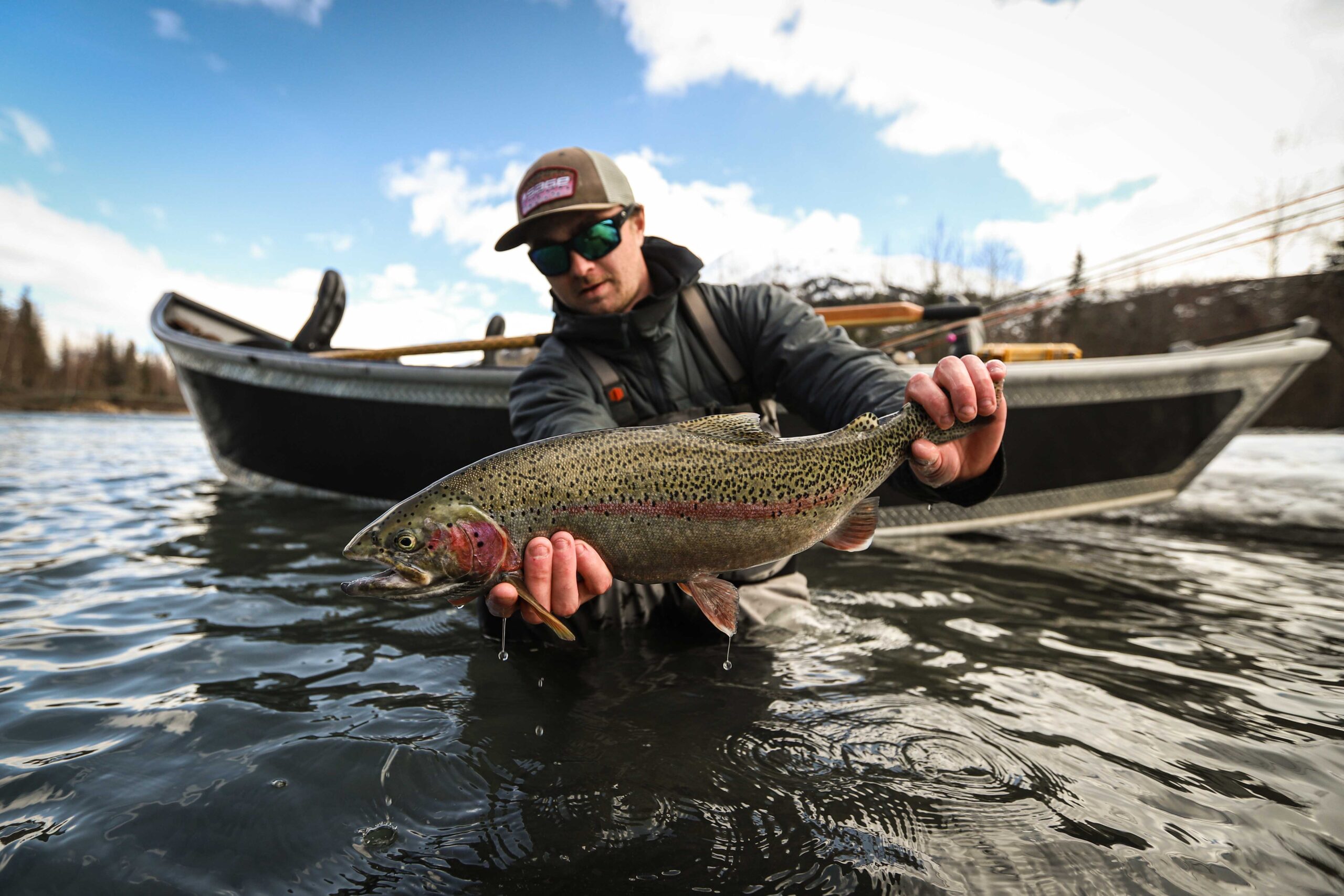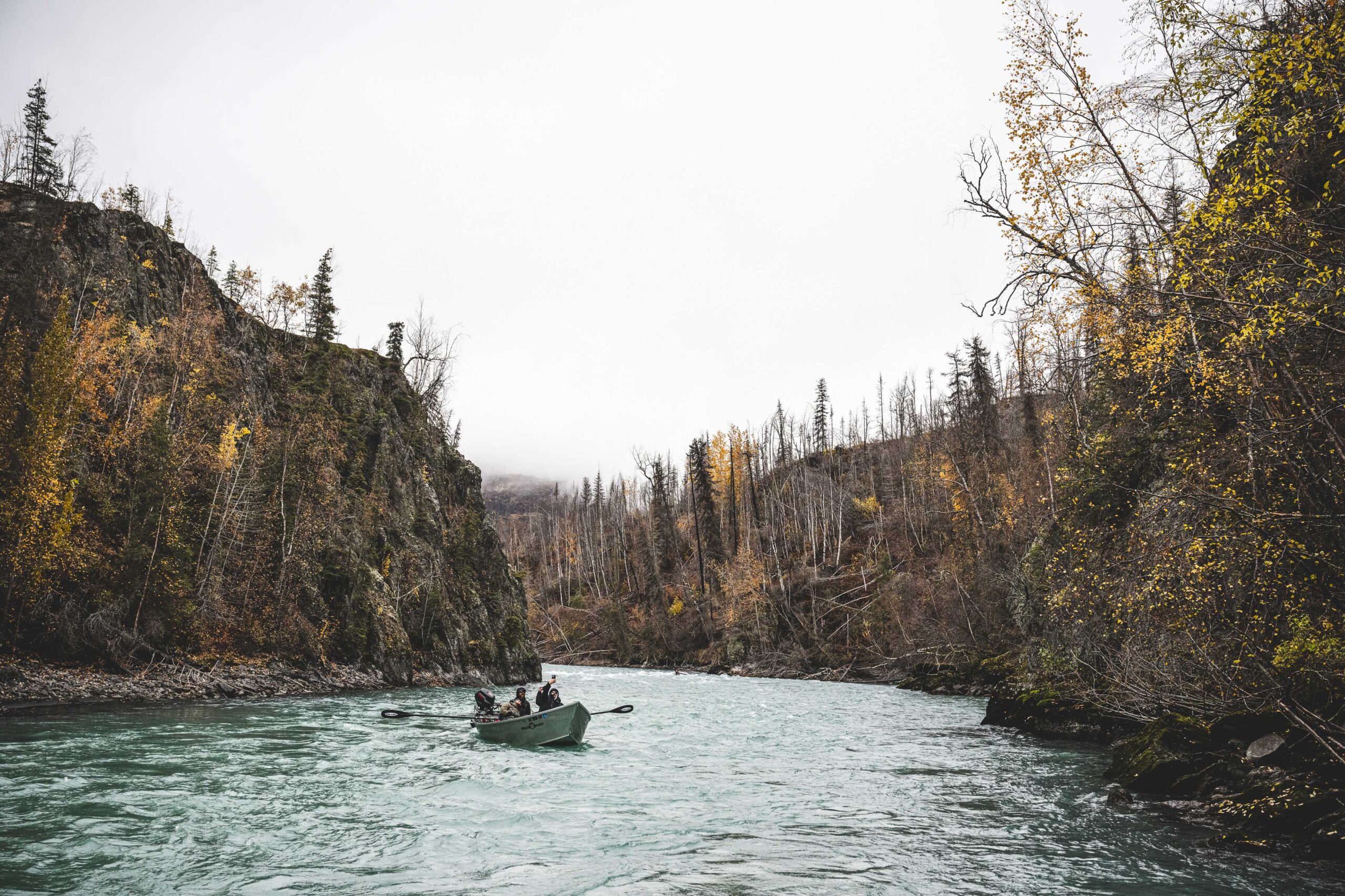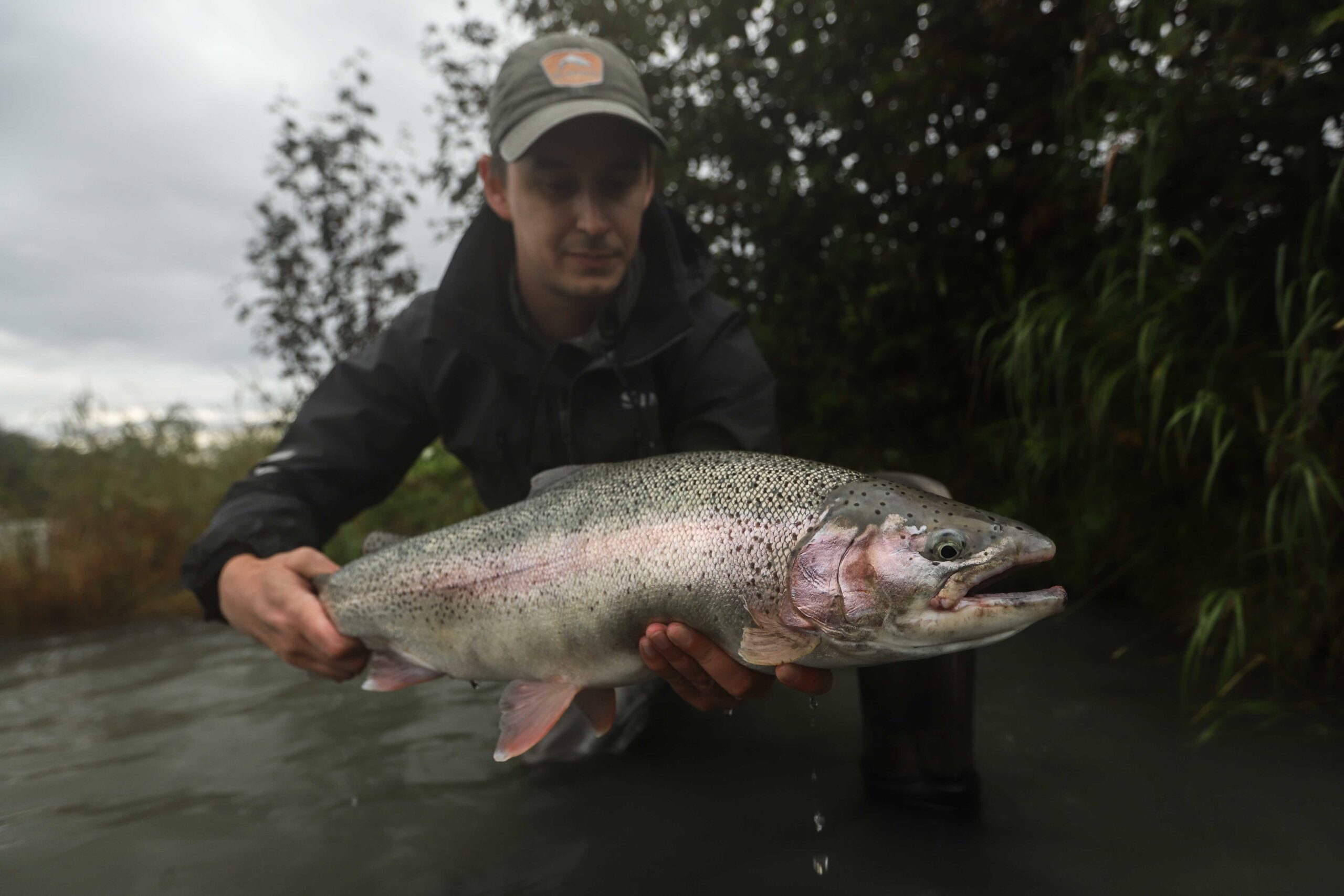Kenai River
Trout Fishing
Rainbow Trout and Dolly Varden
Trout of the Kenai River
The Kenai River is home to some of the largest rainbow trout in the state, country and world. What separates the Kenai from most other rivers is food availability and habitat. The Kenai gets more salmon than any other river annually and that means high protein diets for our trout. The length and sheer size of the Kenai also allows fish to achieve incredible size, nearly 100 miles of river and two lakes, close to 10 miles long with depths over 400 feet provide prime habitat for growing immense trout.
Salmon by the return to the Kenai by the millions each year, they will eventually spawn and die. While spawning, lots of their eggs go arrant from the redds and gravel and are eaten by waiting trout. Salmon eggs are nearly pure protein and grow ou trout to immense sice. Not only do the salmon provide eggs for the trout but nearly all the carcases and flesh willbe consumed by local wildlife up their deaths.
Dolly Varden
When fishing for trout we very frequently run into the beautiful dolly varden. Dollies are a species of char that are present in most watersheds in Alaska. They spend part of the year in the ocean and return to the rivers to feed and spawn. Unlike salmon dolly varden came move freely from the ocean in and out of fresh water without any negative effects. These fish come in from the ocean silvery or “chrome” and develop color as they inhabit the river, they are fall breeders and will be in their colorful spawning plumage by September. The Upper Kenai River is home to some of the bigger and more colorful dollies along the Kenai Peninsula.
Trout Fishing Seasons
June – Our trout season starts annually on June 11th each year, as set by the Alaska Department of Fish and Game, this closure is brought on to provide our trout the opportunity to spawn uninterrupted. June holds the most diversity for methods of capture, meaning the fish are biting streamers, dries, nymphs and even flesh. As the water warms the bugs become active, the Kenai River is host to multiple species of the big three, stoneflies, mayflies and caddis. Dry fly fishing is at its peak during June, in coordination with bug hatches, nymphing is also highly effective when bugs aren’t quite making it to the surface in their adult form. Salmon flesh that has lasted over the winter is very washed out but still available and often targeted by early summer trout. Flesh and eggs comprise the majority of a trout’s annual protein intake, even in the spring. Salmon fry from the year’s previous spawn are attaining some size, ~2″ and are on the menu for June rainbow trout as well.
July – Usually synonymous with the peak of salmon season, July brings the biggest number of visitors to the Kenai Peninsula each year. With the influx of salmon and anglers comes flesh flies and the major addition of salmon flesh to the river system. Sockeye salmon are the big draw for anglers on the Middle and Lower Kenai, each day thousands of salmon are caught filleted and those thousands of fleshy salmon carcasses are discarded back into the river. Throwing carcasses back into the river returns nutrients that would have otherwise been present eventually upon the salmon’s post-spawn death. Midsummer doesn’t traditionally get press for quality trout fishing but it should.
August – As summer has peaked and the seasons start to change, the salmon that have flooded into the river by the literal millions begin to think about spawning. Early August is still a flesh bite for the Middle and Lower Kenai but salmon will begin to spawn on their own by mid August. Kings are typically first to spawn and our trout move from fleshy carcas lies into prime king spawning lanes in anticipation of their eggs. King eggs are the biggest of all salmon species and are well represented by size 10-12mm beads in a variety of colors. Pink salmon also begin to spawn about mid August when present, they have a major run on the Kenai River during even numbered years and are mostly absent during odd numbered years.
September – Fall has arrived, the days are shorter colder and the leaves are turning. Trout fishing is at its peak during the month of September, with the addition of sockeye salmon now spawning, the Kenai is as nutrient rich as it will be all year. Alaskan rainbow trout are by far mostly concerned with eating salmon eggs during the month of September. King salmon, pinks and sockeye salmon are all actively spawning during the month of September and sockeye will continue to spawn through the end of the month.
October – Winter is knocking at the door and we have our first accumulations of snow the trout fishing is still strong and the silver salmon have just yet begun to spawn. October trout fishing on the Kenai provides more solitude than the months previous without sacrificing the fishing. Eggs begin to thin out and trout will actively move on a swung fly, flesh flies, sculpins and leeches all have their place in the late fall. Bicatch of steelhead and silver salmon also increase and offer a welcome addition to the species list for many anglers. Spey fishing in October is at its peak and provides an incredible coverage of water that is now beginning to drop with the onset of winter. The only limiting factor in late fall is the weather, it’s dynamic but with the potential for some very cold mornings and sunny warm afternoons.
Trout Handling and Conservation
Rainbow trout are strictly catch and release only, regardless of regulations we ensure all trout are released unharmed. Trout of the Kenai River are truly our business partners and close friends. We as guides make sure to take the utmost care for these fish as they are potentially fragile creatures. One single fish could be caught many times over the course of the season and make several angler’s day.
– Not bringing fish into the boat.
– Minimizing air exposure and handling.
– Not fishing or wading near spawning fish.
– Using appropriate rubber coated nets.
– Wetting hands before handling fish.
– Removing gloves before handling fish.
Are all simple steps to ensure the safe release of our business partners on the Kenai River.
Kenai River Salmon Fishing
The Kenai River receives a prolific run of salmon annually. Learn more about the different species, run timing and techniques used.
Kenai River Spey Fishing
Spey fish for multiple salmon species, trout and steelhead within the fabled runs of the Kenai River. Learn to spey cast or refine your casting and catch fish!

